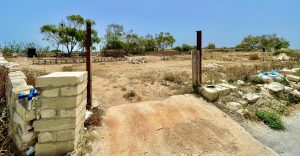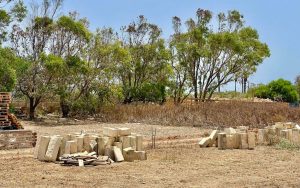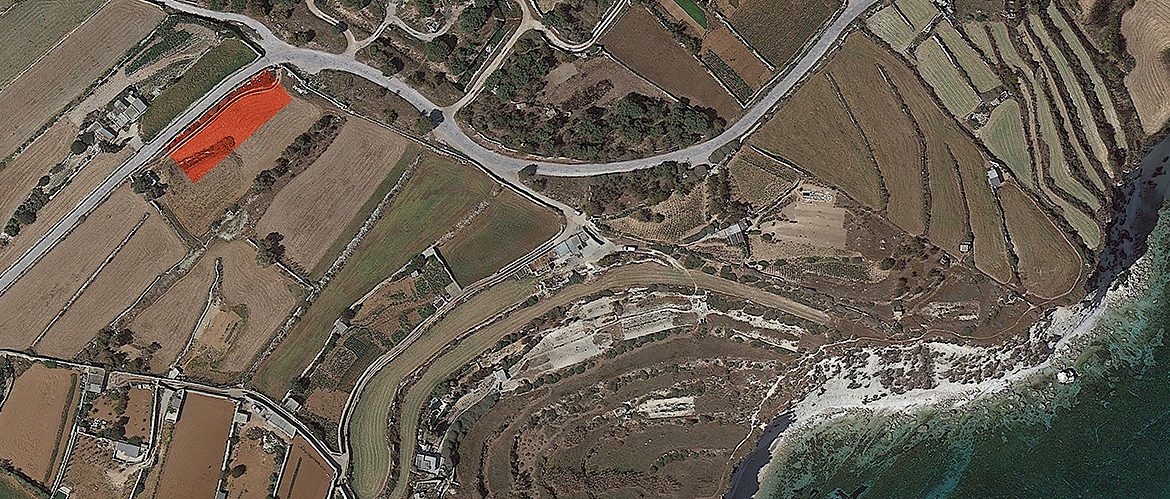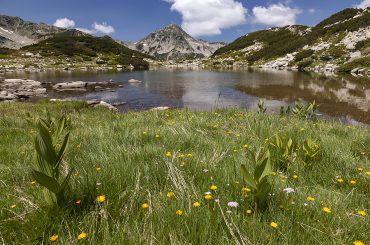Update 8/6/22, 11.45am
The Planning Commission heard the two applications this morning. The architect told the Commission that the perimeter wall, which runs along the road, had "fallen", and indicated that any works or shifting of limestone blocks were due to this incident of the wall having fallen. The Planning Commission rejected both applications on the basis of policies on fragmentation of agricultural land.
Works to divide a part of a field into a further three plots, possibly to be used for recreation, have gotten underway in recent weeks at a scenic spot at Delimara’s coast even as the Planning Authority case officer has recommended a refusal for two parallel applications on site. The Planning Commission is set to decide on the applications this Wednesday.
Investigations by this website has found that the works and applications are in a field that was last year split into three plots by a real estate agent, with each plot measuring around 1,100 square metres and offered for sale separately. At the time the estate agent was asking for €255,000 for the last of those three plots yet to be sold – an impressive price for land that falls far beyond the development zone.

The current development applications – to reconstruct the wall that runs along the road and open two gates – are for plots that are smaller than those marketed by the estate agent.
Assessing the two applications, the Planning Authority’s case officer wrote: “The opening of two gates within a land parcel of less than one tumolo shall create a precedent for the fragmentation of the land parcel and such development is not visually compatible within [sic] the site context.”
The location is an Area of High Landscape Value and Area of Ecological Importance (Level 3), with the field situated around 200 metres from the white coastal cliffs of Il-Hofra, one of Malta’s top scenic spots, popular with yachts and swimmers.

The case officer also argued that the applications are “in conflict” with policies that hold that “rural areas are not exploited by uses which are not legitimate or necessary”.
This may be an allusion to the probable context for the proposed development: a field divided into smaller plots that were purchased by different individuals to use the plots primarily for recreation.

That impressive or extraordinary price requested by the real estate agent last year – €255,000 for a third of a field that falls outside the development zones – is way beyond the business viability of any farming enterprise. It would take a farmer a lifetime to recoup that outlay, if at all, let alone make a profit.
Such price is in fact consistent with speculative market prices for recreation pads in the countryside, as well as the effect of a rural policy, adopted in 2015, that has led to a proliferation of developments – swimming pools, villas, rooms, and stables – in the countryside.
This phenomenon of plots in the countryside for recreation has grown into a trend in recent years. These plots tend to become a patchwork of makeshift rooms or subdivisions, barbecues, picnic areas, and compacted soils and denuded vegetation.
Malcolm Borg of the NGO Ghaqda Bdiewa Attivi has identified this trend as a threat to agriculture and food production.
“Farmers are facing their greatest problem ever,” Borg told this website. “This can really bring down the agricultural sector.”
The demand for fields for recreation and the prices people are willing to pay for them has provided an incentive to land owners to attempt to terminate leases to farmers to be able to sell the land. Technically, leases cannot be terminated by land owners due to a 1960s law that was designed to protect farmers and agricultural land. Yet that law was declared unconstitutional in a judgement last year.
There are now dozens of court cases in which land owners are seeking to evict farmers.
In other cases, farmers themselves are selling land and quitting farming, in the process making the kind of money that would otherwise take decades of menial farm work to earn.
At Delimara, in the field subject to the two applications that are set to be heard by the Planning Commission on Wednesday, there were men doing work last week, one of them moving globigerina limestone blocks with a hand truck. Limestone blocks were shifted to clusters in the field, clustered for some kind of work (perhaps dividing the plots), while openings made in the wall that runs along the road were patched up with wooden pellets.
The two applications in front of the Planning Authority, put in by two separate applicants on the same date and using the same architect, are for opening of two gates and rebuilding the perimeter wall that runs along the road.
Pictures above show what appears to be gates of sorts made of wooden pellets.
This is the first of a four-installment series of investigative articles about the fields being sold into plots for countryside recreation, and the implications of this phenomenon for farmland.
Donate to Investigative Journalism
Robustly researched, professionally delivered, and sustained journalistic investigations published on this website make a difference – and take much time, effort, and resources to produce. Victor Paul Borg relies on donations for income and to fund journalistic investigations. This website's donation setup itself is uniquely transparent, with targeted amounts that allow tracking of donations in real time on the page. Contribute as little as €5 to sustain active journalism that makes an impact.


